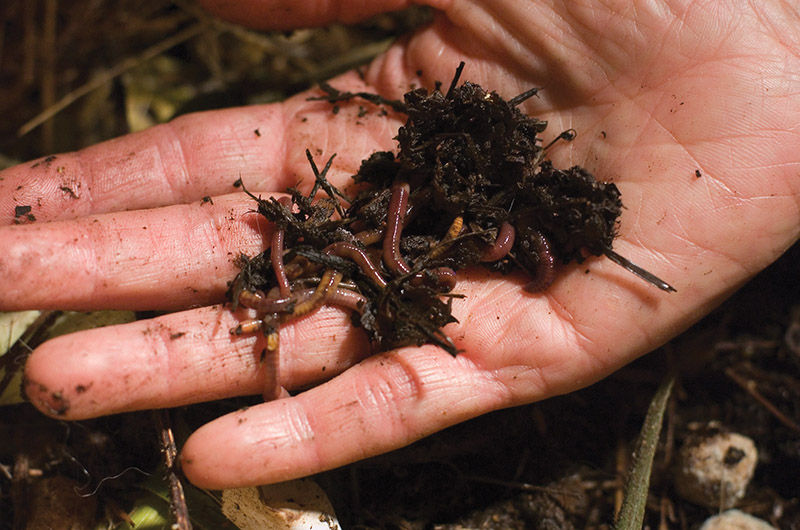Red Wiggler Worms available - Sustainable Waste Management Service
Red Wiggler Worms available - Sustainable Waste Management Service
Blog Article
Taking Full Advantage Of the Advantages of Red Wiggler Worms: A Comprehensive Manual for Home Gardeners and Urban Farmers
In the realm of sustainable gardening practices, red wiggler worms stand as unrecognized heroes, silently transforming organic waste right into nutrient-rich castings that can work wonders for soil health. By exploring the complexities of how to effectively care for and take full advantage of the advantages of red wiggler worms, individuals can open a riches of possibilities for improving the sustainability and productivity of their horticulture undertakings.
Comprehending Red Wiggler Worms
Red Wiggler worms, renowned for their reliable composting capabilities, are a varieties of earthworms commonly used in vermiculture methods. These worms, clinically known as Eisenia fetida, grow in rotting organic material, making them suitable prospects for composting.
One secret characteristic of Red Wiggler worms is their reproductive price. These hermaphroditic animals have both male and women reproductive organs, allowing them to replicate quickly under beneficial conditions. A mature Red Wiggler can produce numerous offspring in a brief period, making certain a steady population within a composting system.

Establishing Up a Worm Container
When developing a worm bin for vermiculture objectives, proper prep work and focus to detail are crucial for producing a helpful environment for Red Wiggler worms. Begin by choosing a suitable container for your worm container.

Location the worm bin in a great, dark place away from straight sunlight and severe temperature levels. By following these steps, you can establish up a flourishing worm container that will successfully process natural waste right into nutrient-rich vermicompost for your yard.
Feeding and Preserving Worms
Guaranteeing a nourishing and well balanced diet is critical for the wellness and performance of Red Wiggler worms in a vermiculture system. It is essential to prevent feeding them citrus fruits, onions, garlic, milk items, meat, and oily foods as these can be dangerous to the worms or trigger unpleasant odors in the bin.
Appropriate wetness degrees are also important for the health of Red Wiggler worms. The bedding ought to really feel like a moist sponge, supplying adequate moisture for the worms to take a breath via their skin. On a regular basis inspect the moisture degrees and readjust by including water or completely dry bed linen material as required. Furthermore, preserving proper temperature level problems in between 55-77 ° F(13-25 ° C )will guarantee ideal worm task and recreation. By vigilantly monitoring their diet plan, dampness, and ecological problems, home garden enthusiasts and metropolitan farmers can maintain a healthy and balanced and productive Red Wiggler worm population for composting functions.
Gathering Worm Castings
To successfully draw out nutrient-rich worm castings from the vermicompost, a methodical harvesting procedure is important for maximizing the composting benefits. Red Wiggler Worms. The first action in collecting worm spreadings is to urge the worms to move away of the bin. This can be achieved by putting fresh food scraps on one side and leaving the other side uninterrupted for a few days. Once the majority of worms have actually dodged with fresh food, the spreadings can be accumulated from the opposite side.
After the castings have been gathered, it is very important to divide any staying worms from the castings to avoid harming them during storage or application. One efficient approach is to create cone-shaped piles of castings under bright light. Worms will instinctively relocate far from the light, permitting very easy separation and elimination.
Last but not least, the collected worm castings ought to be kept in a cool, dark, and completely dry place to keep their quality wikipedia reference and efficiency as a nutrient-rich soil change. By adhering to these steps, home gardeners and urban farmers can maximize the benefits of red wiggler worms in their vermicomposting systems.
Using Worm Castings in Gardening
The consolidation of nutrient-rich worm castings into yard soil can significantly improve plant growth and overall dirt health. Worm spreadings, also referred to as vermicast, are a natural fertilizer produced by red wiggler worms as they damage down organic issue. These spreadings are rich in crucial nutrients like nitrogen, phosphorus, potassium, and valuable microbes that advertise plant development and boost soil framework.
When using worm castings in horticulture, it is necessary to blend them thoroughly into the soil or utilize them as a top clothing around plants. The slow-release nature of worm spreadings guarantees a constant supply of nutrients to plants gradually, minimizing the risk of nutrient leaching and advertising long-term soil fertility. In addition, worm spreadings help improve dirt aeration, water retention, and microbial task, producing a healthy atmosphere for plant origins to flourish.

Final Thought
In conclusion, the application of red wiggler worms in home gardening and metropolitan farming can significantly profit dirt health and wellness and plant development. By comprehending just how to establish and maintain a worm bin, feed the my blog worms correctly, and harvest their nutrient-rich castings, garden enthusiasts can maximize the advantages of these earthworms. Including worm castings into horticulture techniques can boost soil fertility and general plant performance. In general, red wiggler worms use a sustainable and reliable option for enhancing yard and ranch returns.
In the world of sustainable horticulture methods, red wiggler worms stand as unsung heroes, quietly transforming organic waste into nutrient-rich castings that can work marvels for dirt health and wellness.When developing a worm container for vermiculture functions, appropriate useful link preparation and attention to information are vital for producing a helpful environment for Red Wiggler worms. The very first step in harvesting worm spreadings is to urge the worms to move to one side of the bin. Worm castings, also known as vermicast, are an all-natural plant food generated by red wiggler worms as they break down organic issue. By comprehending just how to set up and keep a worm container, feed the worms properly, and collect their nutrient-rich spreadings, gardeners can maximize the advantages of these earthworms.
Report this page